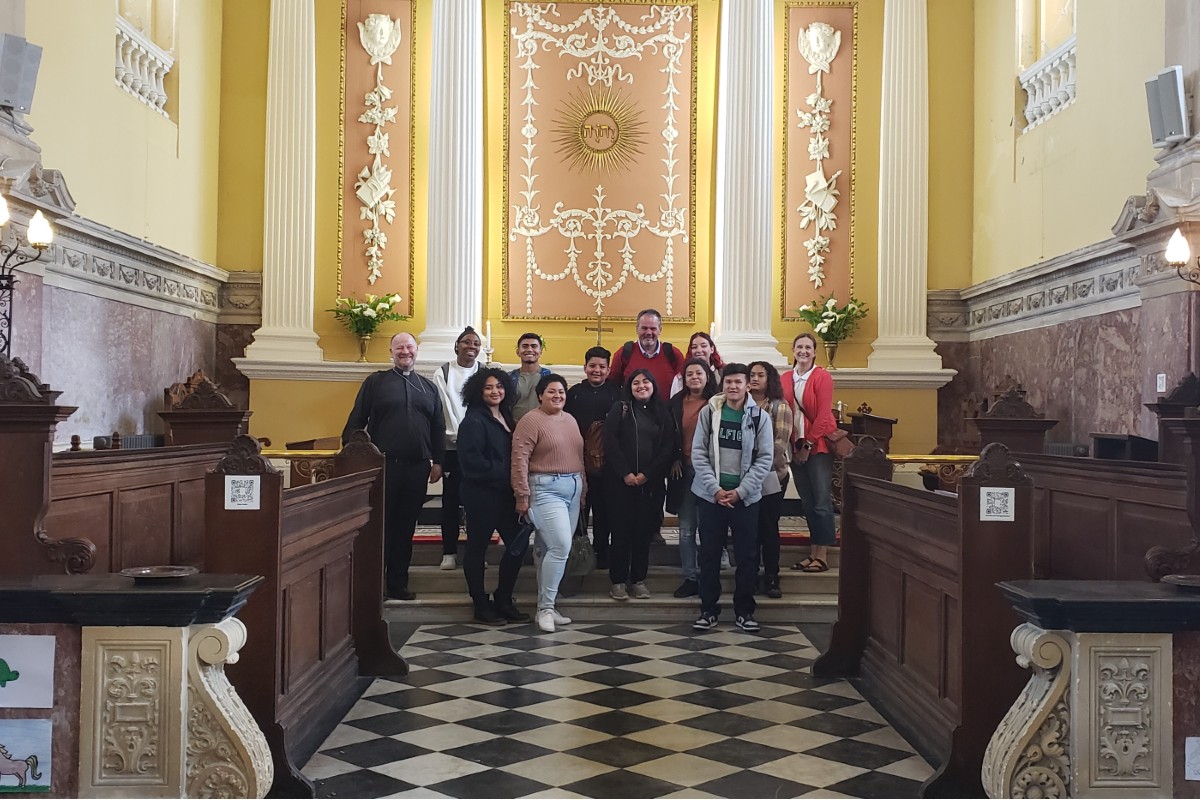By Karen Bass
Director of formation, Christ Church Episcopal
NORCROSS, Ga. | “Pilgrimage” takes on a variety of meanings for folks, but in general it involves a journey far from home and seeking spiritual insight. The youth of Christ Church Episcopal in Norcross have taken several such journeys, primarily to sites of ancient Celtic Christianity in England, Scotland, and Ireland.
The students on the trip included Morgan Rich, Peachtree Corners; Allen Valazquez, Lilburn; and the following from Norcross: Kat, Mario, Jenn and Yana Franco, Vanessa and Christian Falcon, Fawn Johnson, and Yami Silva. Chaperones were Geoffrey Wilson of Norcross and Karen Bass of Decatur.
The youth began planning their most recent trip in September of 2019, anticipating going in June of 2020. Those plans went sideways and became their own sort of pilgrimage as we slogged through a pandemic and postponed it for two years. However, we persevered and 12 people, 10 students and two chaperones, left Atlanta via direct flight to Dublin, Ireland on June 8, 2022.
The lodgings for the week was a 300-year-old converted Ferry House in The Rower, County Kilkenny. That was also the home of our wonderful guide, John Spencer. He regaled us with stories, Irish history, Celtic lore, and encouraged us to look for “Thin Spaces.” A new concept to our students, the idea of “Thin Spaces” originates from a Celtic tradition of giving meaning to the moments in life where heaven feels close to you. Because of John’s lilting Irish brogue, our students spent a bit of time searching for “ten” spaces and “tin” spaces before I had a chance to make sure they knew he had said “Thin.”
The trip was full Thin Spaces, but here are some highlights:
Glendalough, meaning “valley of two lakes,” home to a renowned early medieval monastic settlement founded in the 6th century by St. Kevin. The Irish Annals contain accounts that it once included workshops, areas for manuscript writing and copying, guest houses, an infirmary, farm buildings and dwellings for both the monks and a large lay population. The site was probably “…only from the 10th century.”
St. Mullins, a village named after Saint Moling (or Mo Ling, 614–697), who founded a monastery in the early 7th century. It is said that St. Moling dug a mile-long watercourse with his own hands to power his mill, a task that took seven years. The St. Moling watercourse is still there, but the original monastery was plundered by Vikings in 951 and was again burnt in 1138.
Graiguenamanagh, meaning “hamlet of the monks”, a village on the River Barrow in County Kilkenny, home to Duiske Abbey, the first, largest, and perhaps finest of the Medieval Cistercian monasteries in Ireland.
Comeragh Mountains, home to the glorious Coumshingaun Lake Walk (Hike!), a mountain top lake with glorious, rugged beauty and many Blackface Mountain Sheep (think squirrels in a park.) Forming a natural amphitheater, the pear-shaped Coumshingaun Lake is flanked on three sides by rocky cliffs that rise straight up into the sky.
The Saltee Islands, a sea bird haven for gannets, gulls, and everyone’s favorite, puffins.
The group also visited a lot more “old” places, spent a lot of time in the vast greenness that is the Irish countryside, and visited two cities – Waterford and Kilkenny. Each of us had our own experience of “Thin Space”—-a trip of a lifetime. The group is all grateful for the church family at Christ Church Episcopal for making this trip possible. May God be with you.
- Have a comment? Send to: elliott@brack.net











Follow Us